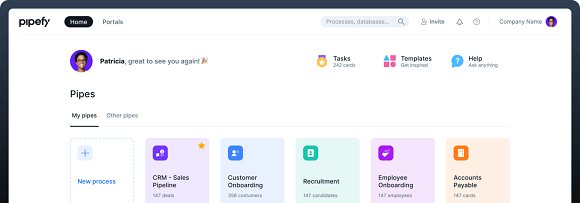Pipefy CTO on low-code: The road from project to product models
The Computer Weekly Developer Network gets high-brow on low-code and no-code (LC/NC) technologies in an analysis series designed to uncover some of the nuances and particularities of this approach to software application development.
Looking at the core mechanics of the applications, suites, platforms and services in this space, we seek to understand not just how apps are being built this way, but also… what shape, form, function and status these apps exist as… and what the implications are for enterprise software built this way, once it exists in live production environments.
This piece is written Daniele Gemignani in her role as CTO atPipefy – a company known for its secure, low-code workflow and business process automation (BPA) platform.
Gemignani writes as follows…
If forecasts about low-code no-code development are accurate, businesses would be well-advised to brace for a tsunami. Gartner predicts that by 2025, 70% of new applications developed by enterprises will use either low-code or no-code technologies. That’s a rapid increase, up from less than 25% in 2020.
Businesses are poised to reap a range of benefits from this swell of low-code no-code development, most of which stem from its ability to accelerate traditional development cycles. More specifically, some of the key benefits of low-code no-code derive from its power to shift teams from a project model to a product model of development. In other words, low-code enables teams to measure their success by the value they deliver to customers, rather than by how closely they adhere to project timelines or budgets.
From project to product model
Both engineering and product teams have been benefitting from the rapid pace of product-focused development models for years. Low-code [and perhaps more prevalently no-code] makes this same degree of agility (and the capacity for incremental development) available to other areas of the business. For example, teams responsible for optimising user experiences, or those tasked with improving internal processes.

Gemignani: We can now build software by incorporating more ‘living feedback’ and other information inside the development cycle.
Low-code no-code achieves the shift from a project to a product delivery mindset in two key ways. First, by applying an incremental approach to development in which the app or solution is available to users even as modifications and changes are underway. For instance, customer-facing apps or processes can be updated without disrupting the workflow or introducing an entirely new customer experience all at once.
The second way low-code no-code supports the product-focused framework is by providing the adaptability needed to incorporate feedback and other information into the development cycle.
By giving business users greater agency in the development process, low-code no-code collapses the distance between those who recognise problems and those who solve them.
Business teams are more agile in a product model of development because they can quickly adapt and respond to new information such as competitor activity, customer feedback, market changes or internal requirements.
Risk reduction
A common concern about low-code no-code is that it introduces risk into the development cycle. Although the addition of any new system or app brings with it a certain degree of risk, there’s a strong case to be made for low-code’s ability to reduce risk overall. This benefit derives directly from the product delivery model enabled by low-code and it manifests in three distinct ways.
First, any low-code (and no-code) development tool worth considering is going to have some security features baked in and certifications attached. Before IT even touches the tool, some guardrails are already in place.
Second, because low-code no-code enables an incremental development cycle, changes can be made at any time. This includes changes necessary for security purposes as well as any modifications needed to deliver a product that’s market-ready. This is the adaptability we discussed earlier. The capacity to quickly react to customer feedback, competitor activity and market changes allows for new, relevant information to be incorporated into the next iteration of the product. That’s important for both product relevancy/readiness and for maintaining security.
Third, low-code no-code software helps business teams standardise their processes with features such as a visual, drag-and-drop interface, rules and conditionals, templates and automations. The degree of consistency low-code introduces makes it easier for IT teams to enforce security and compliance measures. Standardised processes also increase visibility into the development cycle while simultaneously reducing opportunities for errors.
Resource allocation
Beyond risk reduction, the product-focused model of development that low-code no-code introduces delivers additional advantages for business teams. Because IT/engineering teams are providing a secured framework for development, they spend less time coding and overseeing each iteration of the product. This allows them to redirect their time and attention to managing overall security or other business priorities.
The capacity for low-code no-code to free up IT resources will likely play a pivotal role in business success in the future, as demand for engineering and IT talent outpaces supply
Low-code no-code tools complement existing tech stacks and create seamless user experiences. Low-code accomplishes these goals by dissolving data silos and providing teams with a tool that automates the long-tail processes. These are the unique and incidental processes that fall outside the business core and therefore may not be manageable with existing ERPs, iPaaS or apps.
IT & business alignment
The product model of development changes the relationship between IT teams and business users by improving alignment and reducing pressure on the backlog. Just as importantly, it gives business teams the freedom to safely explore and experiment in their approach to problem-solving, two crucial ingredients that cultivate product innovation, process optimisation and better user experiences.
As with the benefits of risk reduction, resource allocation and long-tail process automation, improved alignment and capacity for innovation emerge from the product development model that low-code software makes possible.




